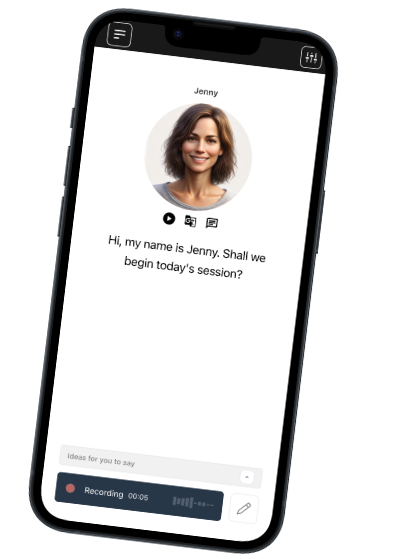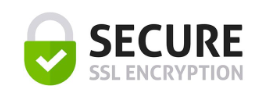Founded in Denmark. We respect your privacy.
Join a worldwide community of language learners
The Silent Barrier: When Employees Don’t Speak Up Because of Language Anxiety
Last updated on
Nearly one in three multilingual employees admit they’ve stayed quiet in a meeting, not because they had nothing to say, but because they feared saying it “wrong.” You’ve probably seen it happen: someone shifts in their seat, avoids eye contact, then lets the moment pass.
Language anxiety isn’t just about mispronouncing a word, it’s the knot in your stomach when you’re certain people are judging the way you sound. It’s that mental tug-of-war between wanting to share your ideas and wanting to avoid embarrassment at all costs.
If this sounds familiar, it’s because it’s more common than most teams realize. But here’s the good news, you can help break that silence. And once you do, you’ll find that the best ideas aren’t hidden by language; they’re simply waiting for the right moment to be heard.
Understanding Language Anxiety in the Workplace
Think of language anxiety as a quiet shadow, it follows even the most talented professionals into meetings, presentations, and client calls. At its core, it’s the fear of speaking up because of the possibility of mistakes, misunderstandings, or sounding “off.”
The cost of this fear isn’t small. Ideas stay hidden, collaboration slows, and career growth stalls when voices go unheard. A team may think the silence means agreement, when in reality, it’s hesitation wrapped in self-doubt.
And it’s not just about grammar. For many, the real hurdle is pronunciation, using the right tone, or navigating cultural nuances across multiple dialects. Even employees fluent in their second language can hesitate if they worry about “how” they’ll sound more than “what” they’ll say. Recognizing this silent barrier is the first step to breaking it.
Signs Your Team May Be Holding Back
Sometimes, the hints are right in front of you. You notice someone skipping their turn to give a verbal update, sticking to chat messages instead of speaking up, or keeping their responses short and cautious. These aren’t signs of disinterest, they can be signs of language anxiety at work.
One manager shared how a major product improvement almost never happened. A team member had the idea for weeks but waited until a private one-on-one to mention it, fearing they’d stumble over words in the bigger meeting. That hesitation delayed a solution everyone needed.
Spotting these patterns isn’t about pointing fingers, it’s about opening doors. Once you see them, you can create safer spaces for people to contribute, knowing that the difference between “no input” and “unspoken input” can change the course of a project.
Why the Usual Training Doesn’t Always Work
Here’s the thing. Most corporate language programs aren’t built for the real, messy conversations that happen at work. They’re often too formal, sticking to scripted dialogues and textbook grammar that don’t match the pace or tone of everyday meetings.
Then there’s the lack of real-time speaking practice. Reading aloud from a slide or repeating phrases from a video isn’t the same as thinking on your feet during a client call. Without that experience, confidence stays shaky.
And finally, feedback matters. Without clear, personalized input on pronunciation and phrasing, employees are left guessing where they went wrong. This is where life-like voice conversations and pronunciation practice tools shine, they let learners rehearse, make mistakes privately, and correct them instantly, without an audience. That kind of safe space turns hesitation into habit.
Turning Silence into Confidence
Confidence isn’t built in a single meeting; it’s shaped in the moments leading up to it. When employees have a safe space to rehearse, the fear of “getting it wrong” starts to fade.
Here’s a simple framework you can follow:
Practice in Real Contexts
Simulate actual work scenarios, team updates, client calls, or brainstorming sessions, so practice feels relevant, not abstract.
Get Feedback Without Pressure
Use tools that offer detailed feedback on pronunciation and phrasing so mistakes become learning moments, not public slip-ups.
Start Small, Then Expand
Encourage low-stakes speaking opportunities before high-pressure presentations, confidence grows step by step.
Platforms like Talkio allow employees to engage in life-like voice conversations, receive instant corrections, and refine their skills at their own pace.
Takeaway
Language anxiety may quiet a voice for a moment, but it doesn’t have to keep it silent forever. When employees feel safe to speak, they don’t just contribute more, they grow, connect, and lead with confidence.
A thriving workplace isn’t built on perfect sentences; it’s built on shared ideas, honest input, and the courage to speak up.
Fluency is more than grammar, it’s the ability to be understood, valued, and heard. The more you nurture that, the more your team’s potential will turn into progress everyone can see and feel.
Talk Your Way
to Fluency

Talkio is the ultimate language training app that uses AI technology to help you improve your oral language skills!
Try Talkio


